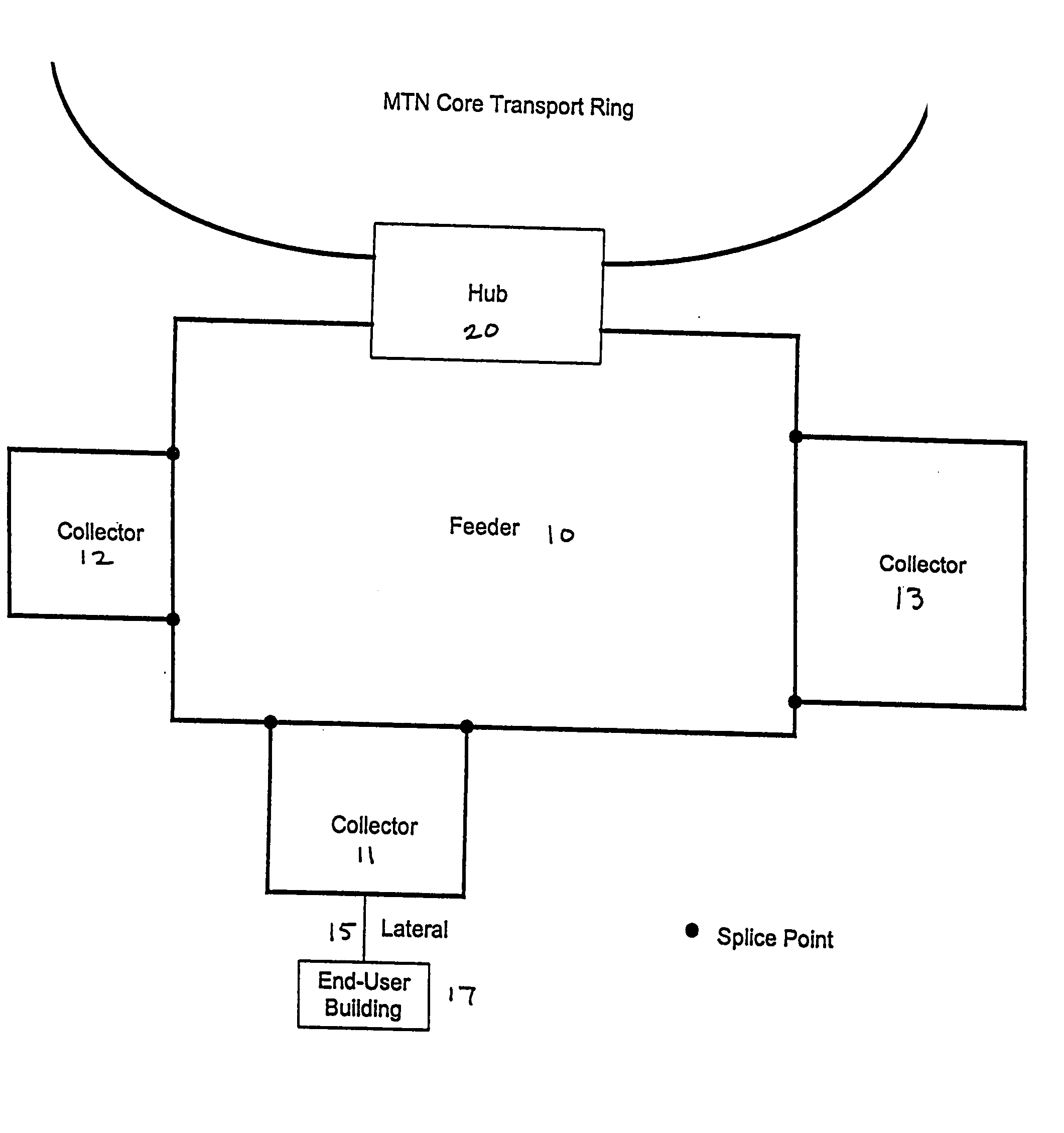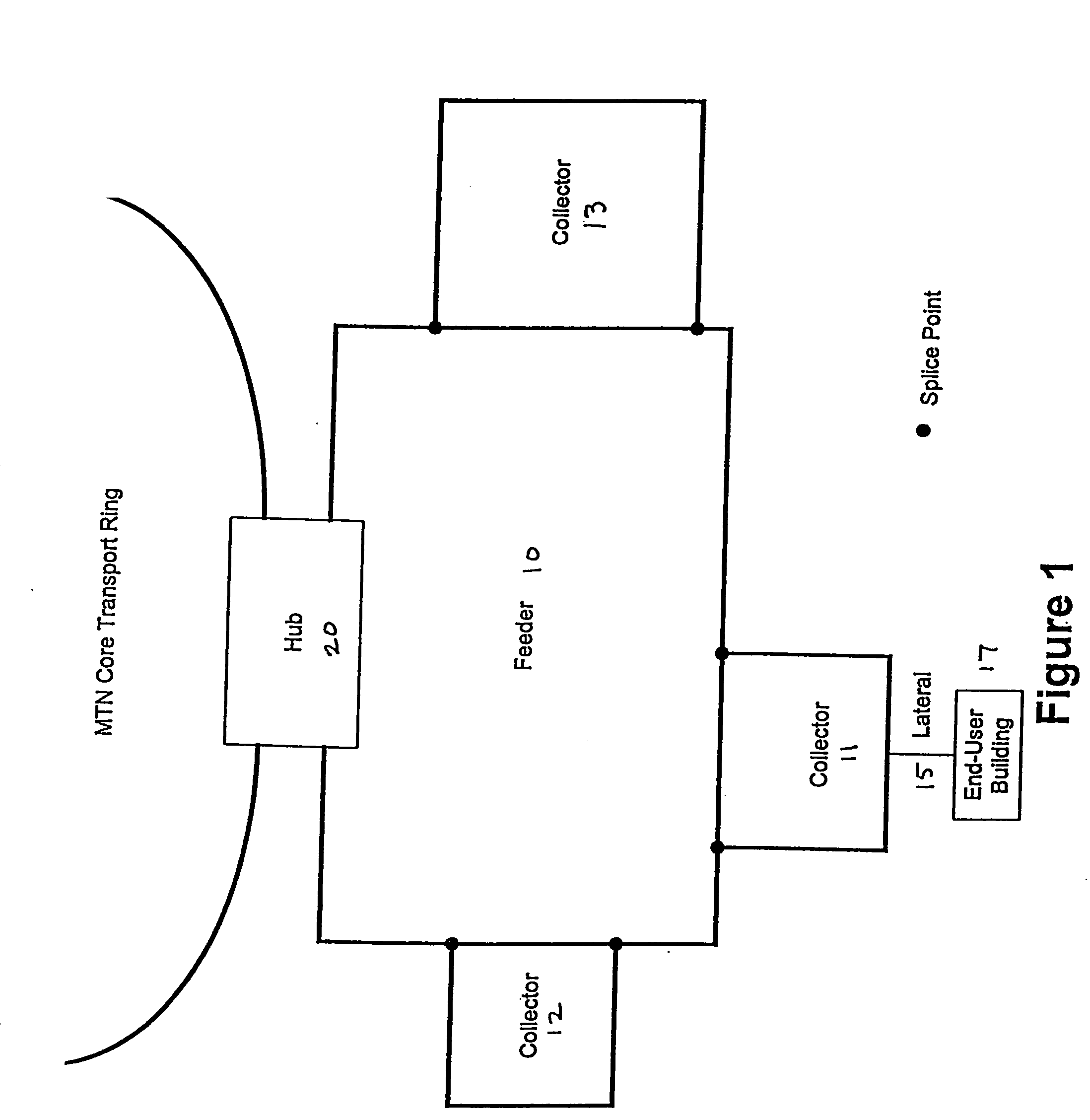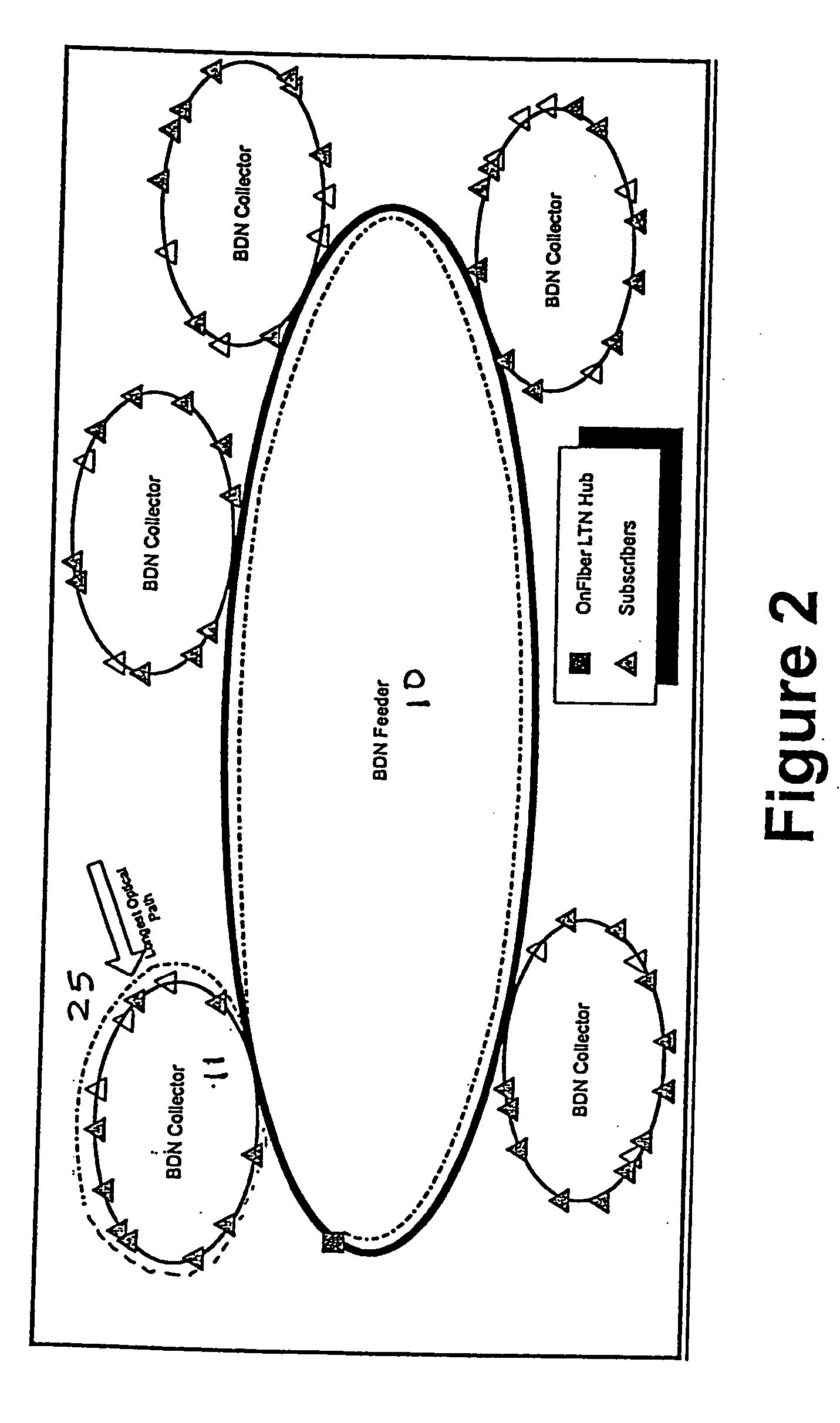Metropolitan area local access service system
a local access service and metropolis technology, applied in the field of fiber optic communications networks, can solve the problems of minor changes in infrastructure content, not end-user data content, and achieve the effect of surviving any single network failur
- Summary
- Abstract
- Description
- Claims
- Application Information
AI Technical Summary
Benefits of technology
Problems solved by technology
Method used
Image
Examples
Embodiment Construction
[0017] A fiber optic transport network can generally be described in terms of three primary components: (i) a leased transport network (LTN), (ii) a leased distribution network (LDN); and (iii) a built distribution network (BDN), which may be a distribution network in accordance to the present invention (see FIGS. 1-6).
[0018] The LTN is the main transport layer of each metropolitan system. It typically consists of a high-bandwidth, flexible DWDM transport pipe used to connect customer locations (such as data centers, co-location hotels, and large customer POPs) to distribution networks.
[0019] The distribution networks may comprise both LDN and BDN designs, though either may be excluded. Although similar in general purpose, an LDN and a BDN may use differing architectural approaches to bring traffic to the LTN. While the LDN typically relies on TDM (and sometimes WDM) electronics to multiplex traffic onto limited quantities of fiber, the distribution network according to the presen...
PUM
 Login to View More
Login to View More Abstract
Description
Claims
Application Information
 Login to View More
Login to View More - R&D
- Intellectual Property
- Life Sciences
- Materials
- Tech Scout
- Unparalleled Data Quality
- Higher Quality Content
- 60% Fewer Hallucinations
Browse by: Latest US Patents, China's latest patents, Technical Efficacy Thesaurus, Application Domain, Technology Topic, Popular Technical Reports.
© 2025 PatSnap. All rights reserved.Legal|Privacy policy|Modern Slavery Act Transparency Statement|Sitemap|About US| Contact US: help@patsnap.com



